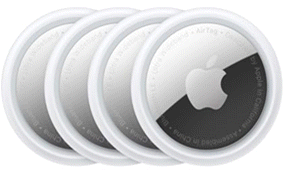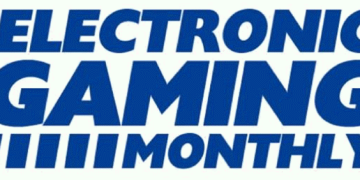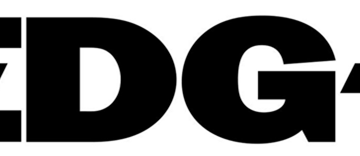Andrew Orr <andreworr@appleinsider.com>
2025-09-18 14:57:00
appleinsider.com
Apple will put its next-generation R2 chip based on TSMC’s 2nm process inside a future Apple Vision Pro, making the headset the showcase for its most advanced silicon.
The company is expanding its chip strategy from phones and laptops to headsets. The Apple Vision Pro, an expensive niche device, will get the new R2 chip built on TSMC’s 2nm process.
That move signals Apple’s intent to make mixed reality a proving ground for cutting-edge silicon. The same supply chain reports point to the iPhone 18 Pro and the MacBook M6 also adopting 2nm chips, but the Apple Vision Pro will be the boldest test.
Apple’s silicon play
Apple has long treated chips as its competitive weapon. The A-series processors in iPhones often outperform Android rivals, and the M-series let Macs cut free from Intel.
The Apple Vision Pro faces a unique challenge because it has to handle real-time rendering, high-resolution displays, and constant sensor input. It needs to do all that without draining the battery quickly, so chip efficiency matters more than raw speed.
Apple is developing the R2 chip in-house to gain more control over performance, power, and design. It took a similar approach in 2019 when it bought Intel’s modem division to reduce its reliance on Qualcomm.
Apple doesn’t build its own chips. It relies on TSMC, the world’s leading foundry, which is preparing to ramp up 2nm production in late 2025.
The 2nm process uses gate-all-around transistors, delivering about 15% more performance or 30% less power compared to 3nm. This results in lighter batteries and less heat on the user’s face for Apple Vision Pro.
Supply chain reports suggest Apple has already secured a large share of early capacity. TSMC expects 40,000 wafers a month by the end of 2025 and nearly 100,000 in 2026.
That kind of lock-in leaves little room for rivals.
Risks hiding under the hood
Early process nodes are rarely smooth, and yields often suffer with many chips failing tests. Analysts say 2nm wafers cost around $30,000, so each failed unit is expensive.
That’s a manageable risk in a $1,000 iPhone but harder to justify in a headset that already costs over $3,000. Apple either eats the expense and trims margins or risks pricing the Apple Vision Pro even further out of reach.
Apple has to prove it can design chips that handle the demands of mixed reality as well as it has done for phones and laptops. If the R2 stumbles, the Apple Vision Pro could be remembered less for immersion and more for overheating.
Broader strategy
Apple isn’t relying only on the Apple Vision Pro. The iPhone 18 Pro will likely feature the A20 processor and is expected to have Apple’s C2 modem. The MacBook M6, whenver that arrives, is expected to move to 2nm as well.
The company is putting all its devices on the same cutting-edge process to gain performance and efficiency advantages across its ecosystem. Apple’s approach builds the same kind of momentum it had when the M1 MacBook launched.
TSMC is at the center of Apple’s plan, and its success or failure at 2nm will affect the entire product line. Any disruption in Taiwan could lead to delays or shortages across multiple flagship devices.
Apple has built its dominance by taking control of critical technologies. It wasn’t first with MP3 players or smartphones, but it refined both categories until its products became the standard.
The company is bringing modems, processors, and headset chips in-house to rely less on suppliers that once set the terms or even sued over licensing. Apple’s approach also keeps users tightly within an ecosystem that competitors struggle to match.
Apple might release a mid-cycle update for the Vision Pro in late 2025 with an M4 or possibly an M5 chip. The refresh would bring the headset in line with Apple’s other devices on the silicon roadmap.
It could reassure buyers that the platform is still moving forward. The update likely won’t be the major leap Apple needs to justify the headset’s high price.
The real leap will come with R2, expected on TSMC’s 2nm process in 2026. That chip isn’t just another processor upgrade, it’s Apple’s attempt to prove that mixed reality deserves its own cutting-edge silicon.
If R2 delivers, Apple Vision Pro could finally justify its price and shake off its early reputation as a costly experiment. If it doesn’t, the headset risks slipping further into the margins of Apple’s lineup.

Keep track of your essentials with the Apple AirTag 4 Pack, the ultimate tracking solution for your belongings. With over 5,972 ratings and a stellar 4.7-star average, this product has quickly become a customer favorite. Over 10,000 units were purchased in the past month, solidifying its status as a highly rated Amazon Choice product.
For just $79.98, you can enjoy peace of mind knowing your items are always within reach. Order now for only $79.98 at Amazon!
Help Power Techcratic’s Future – Scan To Support
If Techcratic’s content and insights have helped you, consider giving back by supporting the platform with crypto. Every contribution makes a difference, whether it’s for high-quality content, server maintenance, or future updates. Techcratic is constantly evolving, and your support helps drive that progress.
As a solo operator who wears all the hats, creating content, managing the tech, and running the site, your support allows me to stay focused on delivering valuable resources. Your support keeps everything running smoothly and enables me to continue creating the content you love. I’m deeply grateful for your support, it truly means the world to me! Thank you!
|
BITCOIN
bc1qlszw7elx2qahjwvaryh0tkgg8y68enw30gpvge Scan the QR code with your crypto wallet app |
|
DOGECOIN
D64GwvvYQxFXYyan3oQCrmWfidf6T3JpBA Scan the QR code with your crypto wallet app |
|
ETHEREUM
0xe9BC980DF3d985730dA827996B43E4A62CCBAA7a Scan the QR code with your crypto wallet app |
Please read the Privacy and Security Disclaimer on how Techcratic handles your support.
Disclaimer: As an Amazon Associate, Techcratic may earn from qualifying purchases.


















































![[01_Odyssey] Generative art Exhibition – Dark Room Experience](https://techcratic.com/wp-content/uploads/2025/09/1758190693_maxresdefault-360x180.jpg)






















































